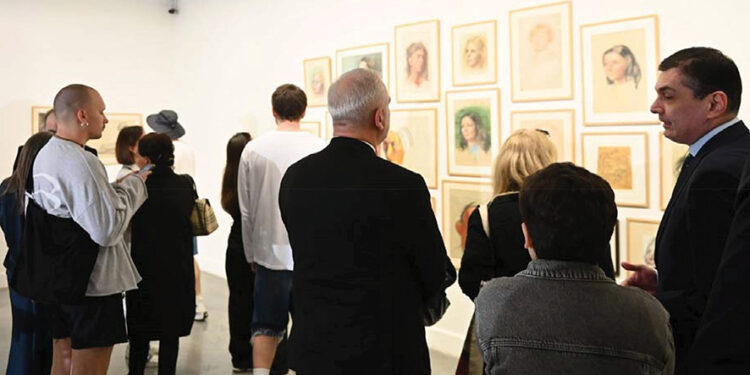When the Dimitri Shevardnadze National Gallery unveiled its newest major exhibition, a 270-piece retrospective dedicated to the Georgian-Abkhazian prince and scenographer Alexander Shervashidze, it did more than fill a room with history: it resurrected a myth, a chapter of Georgia’s artistic diaspora, long silenced by wars, exiles, and political forgetfulness.
Born in 1867 in Feodosia, on the Crimean coast, Alexander Shervashidze (also known as Alexandre Chérovachidze) embodied the ruptures and splendors of the late 19th and early 20th centuries. Descended from the princely house of Abkhazia — a family lineage as enmeshed with Byzantium as with the Russian Empire — his was a fate marked by flight. After the Bolshevik Revolution, Shervashidze emigrated to France, joining the tide of stateless Russian and Caucasian intellectuals who would reshape European art from its fringes.
The exhibition, initiated by the Ministry of Education and Culture of the Autonomous Republic of Abkhazia, and curated by Dr. Nana Shervashidze (a descendant and a specialist in émigré Georgian art), does not just honor a forgotten son; it reconfigures his place in both Georgian and European art histories. The nearly 270 exhibits, pulled from the formidable holdings of the Shalva Amiranashvili Museum of Art, trace a career that unfolded across Russian imperial salons, Parisian theaters, and the ateliers of the Ballets Russes.
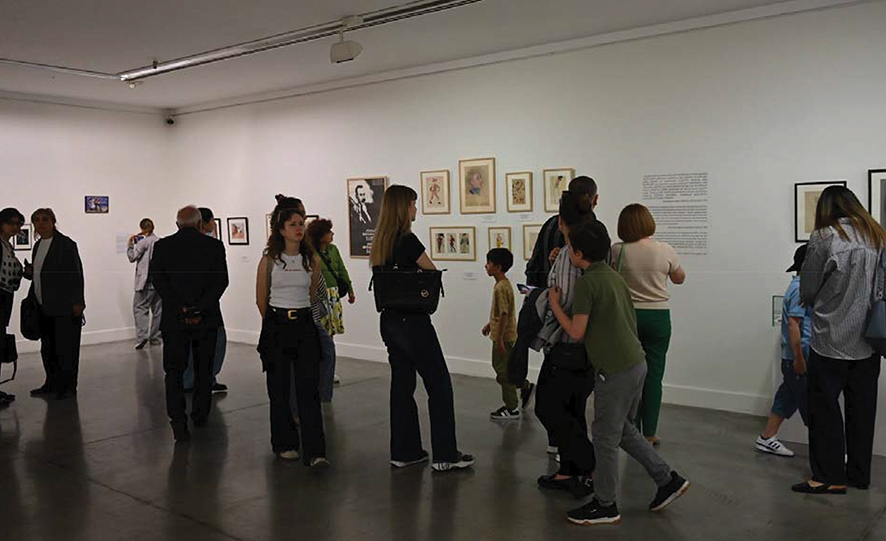
Theater as Iconography
What makes Shervashidze’s legacy so magnetic — and so ripe for rediscovery — is his synthesis of Georgian medieval visual culture, Orthodox iconographic form, and cutting-edge theatrical design. His collaborations with legendary directors and impresarios, including Sergei Diaghilev, placed him at the avant-garde of stagecraft. Yet, even amid futurist ballet and Wagnerian opera, his visual language retained a distinct aesthetic mysticism: elongated silhouettes, golden Byzantine light, labyrinthine architectural motifs — elements that spoke of a lost Orthodox Orient hovering behind modernity’s rush.
In this retrospective, these motifs are palpable: sketches for set designs, costume illustrations, and scenographic models shimmer with a metaphysical elegance. Shervashidze was never merely a decorator; he was a philosopher of atmosphere, transforming theater into a ritual space. In his 1912 designs for The Legend of Saint Elizabeth at the Mariinsky Theatre, sacred architecture unfolds like a dreamt cathedral; his 1920s Paris work, in contrast, channels Art Deco and Symbolist abstraction into the shimmering language of exile.

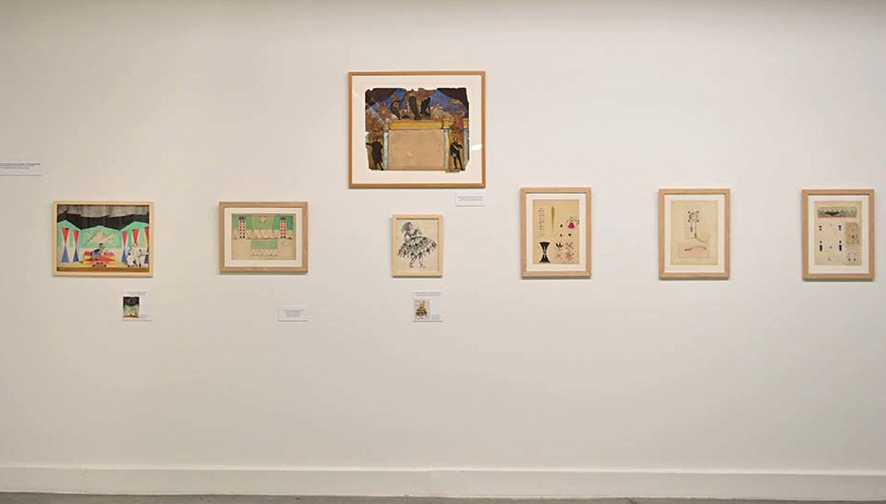
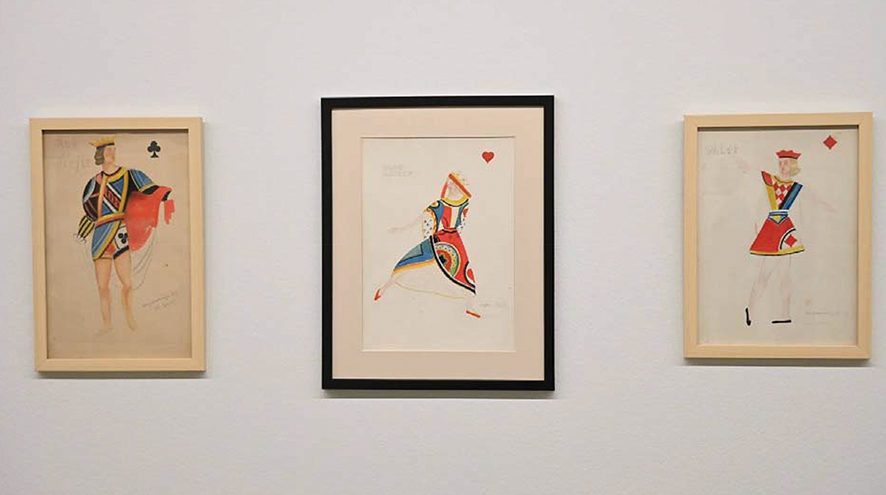
A Georgian Diaghilev?
It’s tempting to call him a Georgian Diaghilev — an exile who translated national identity into cosmopolitan innovation — but Shervashidze was less an impresario than a solitary visionary. The tragedy, of course, is that much of his work vanished with time. Ephemeral by nature, set designs and costumes rarely outlive the performance. This makes the archival labor behind this exhibition all the more monumental. Dr. Nana Shervashidze’s curation reconstructs a life through fragments — watercolors, faded pencil sketches, photographs of vanished productions — each acting as a cipher for the grandeur once materialized on stage.
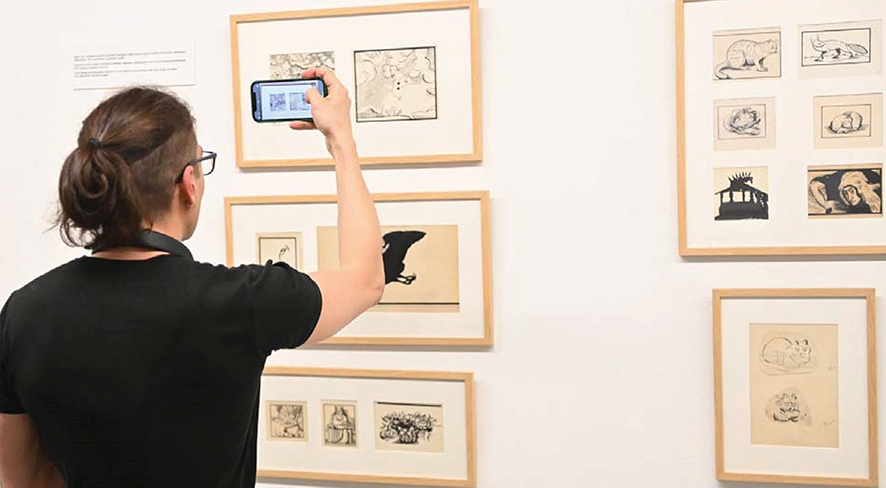
Politics of Absence and Return
The opening ceremony reflected the exhibition’s symbolic and political charge. Levan Mgaloblishvili, Jemal Gamakharia, and Beka Ghvichiani — political leaders from the Autonomous Republic of Abkhazia government — addressed the audience with a message that transcended mere art history. In honoring Shervashidze, they were also invoking a vision of Abkhazia not defined by conflict or occupation, but by intellectual brilliance and cultural contribution.
It is no accident that the exhibition arrives now. As Georgia continues to navigate the memory wars of its post-Soviet condition — between nostalgia, trauma, and contested geographies — figures like Shervashidze become vessels for soft power, cultural diplomacy, and identity reconstruction. His art, forged between St. Petersburg, Paris, and Tbilisi, becomes a space of encounter — between empires, aesthetics, and histories.
For Georgian audiences, especially the younger generation, this exhibition is a lesson in the paradoxes of nationhood and exile. It challenges the borders of what Georgian culture is presumed to be. Shervashidze never lived in independent Georgia, never painted its mountains or folktales in the manner of Lado Gudiashvili or Elene Akhvlediani. Yet his work, suffused with Orthodox ritualism and historical longing, belongs fully to the Georgian imagination — just one displaced across continents and decades.
Moreover, this retrospective reaffirms the Georgian National Museum’s growing ambition to recontextualize its holdings not as provincial but as integral to broader European and Eurasian modernism. This is not merely heritage management; it is a reassertion of cultural agency.
The exhibition runs until June 16 — an ephemeral span that mirrors the transient nature of theater itself. Yet what it offers is enduring: a glimpse into a world where art crossed borders more freely than its creators could, where aristocrats turned refugees re-enchanted Europe’s stages with the ghosts of their lost homelands.
Standing before Shervashidze’s drawings — delicate yet tectonic, mournful yet luminous — one feels not only the presence of a great scenographer, but the haunting echo of an entire civilization in exile, now briefly, triumphantly, restored.
By Ivan Nechaev

